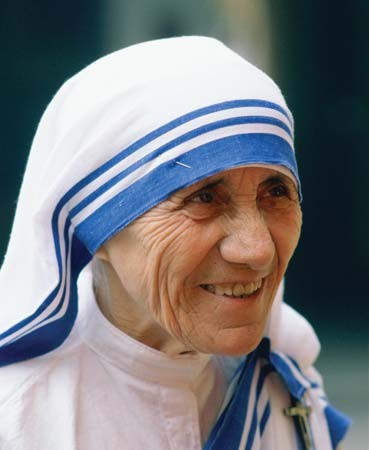Saint Teresa’s Saree is now Patented
The Missionaries of Charity have patented the white and blue sari designed by Saint Teresa of Calcutta, obtaining a legal copyright recognizing the pattern as the intellectual property of the order.
Although it was never officially announced, the copyright had been granted the same day as Mother Teresa’s Sept. 4, 2016 canonization as the culmination of a three year legal process.
Intellectual property attorney Biswajit Sarkar said that the blue-designed border on the sari worn by nuns of Missionaries of Charity was recognized as Intellectual Property for the organization on September four, 2016, the day the Mother was canonize. But now we are witnessing unscrupulous and unfair usage of the design across the globe and hence are trying to spread awareness among people about the trademark.

The sari, which is the habit of the Missionaries of Charity sisters, was designed by Mother Teresa when she went to the streets in 1948 to serve the poor. It is white with three blue stripes, the outer stripe being larger than the inner two.
Mother Teresa’s blue border pattern “is a distinctive symbolic identity of the Missionaries of Charity under the concept of color trade mark protection,” Sarkar said. The significance of the colors chosen for the sari, the white stands for truth and purity, while the three blue stripes on the border signify the vows that the nuns take: the first represents poverty, the second obedience, and the third, broader band, represents the vows of chastity and wholehearted service to the poorest of the poor. The cross sewn onto the left shoulder of the habit is symbolic of the fact that for the Missionaries of Charity, Christ on the Cross is the key to the heart.

Novices who join the order wear plain white saris with no stripes. Only after four years of formation, when they are ready to take their vows, do they receive the sari with the blue stripes. Each sister has only three saris.
The sisters sent their application to the Trade Marks Registry of the Indian government in December 2013, and after a three-year “stringent test of legal proceedings” the copyright registration was granted to coincide with the same day as Mother Teresa’s canonization, despite the fact that it was a Sunday.









